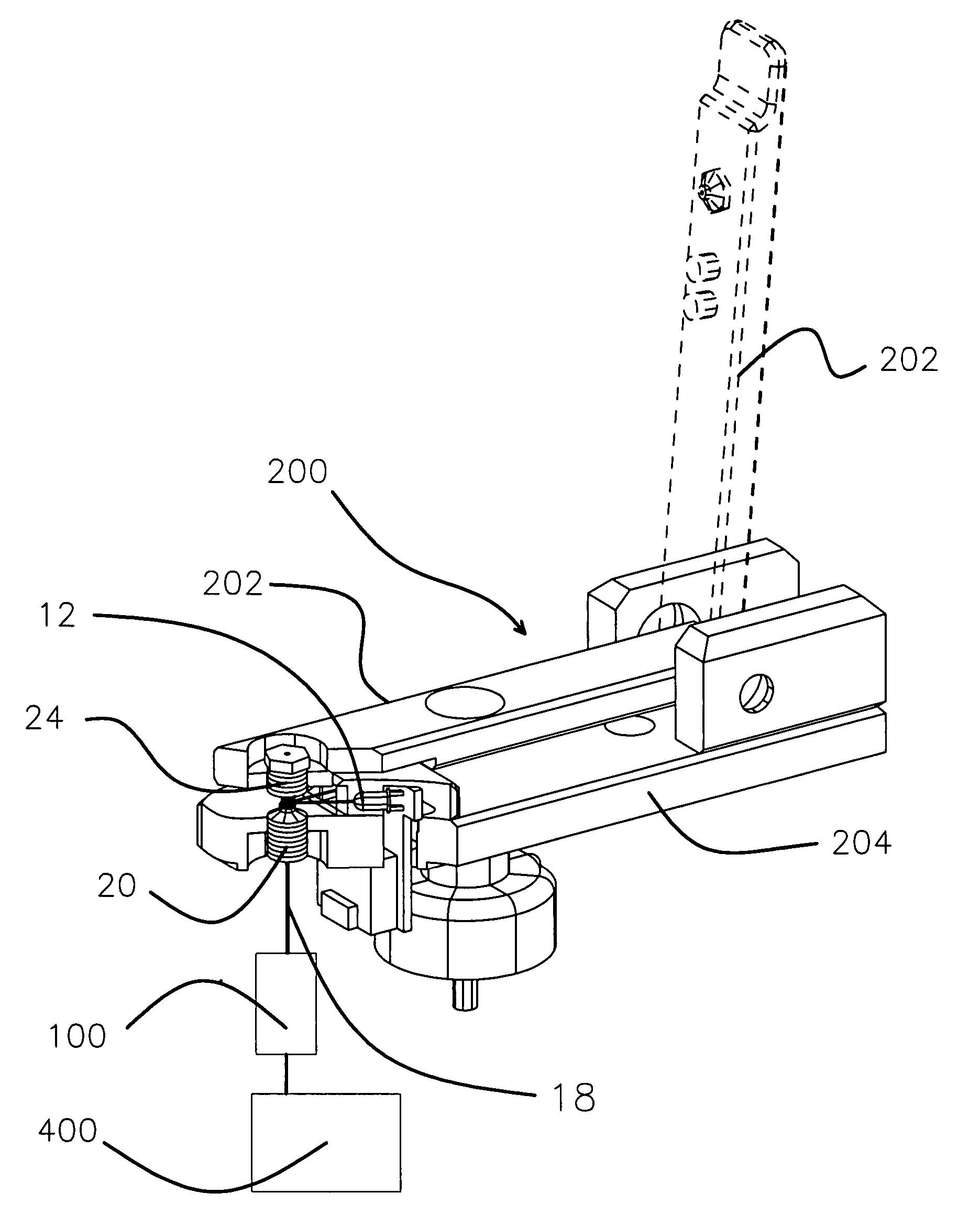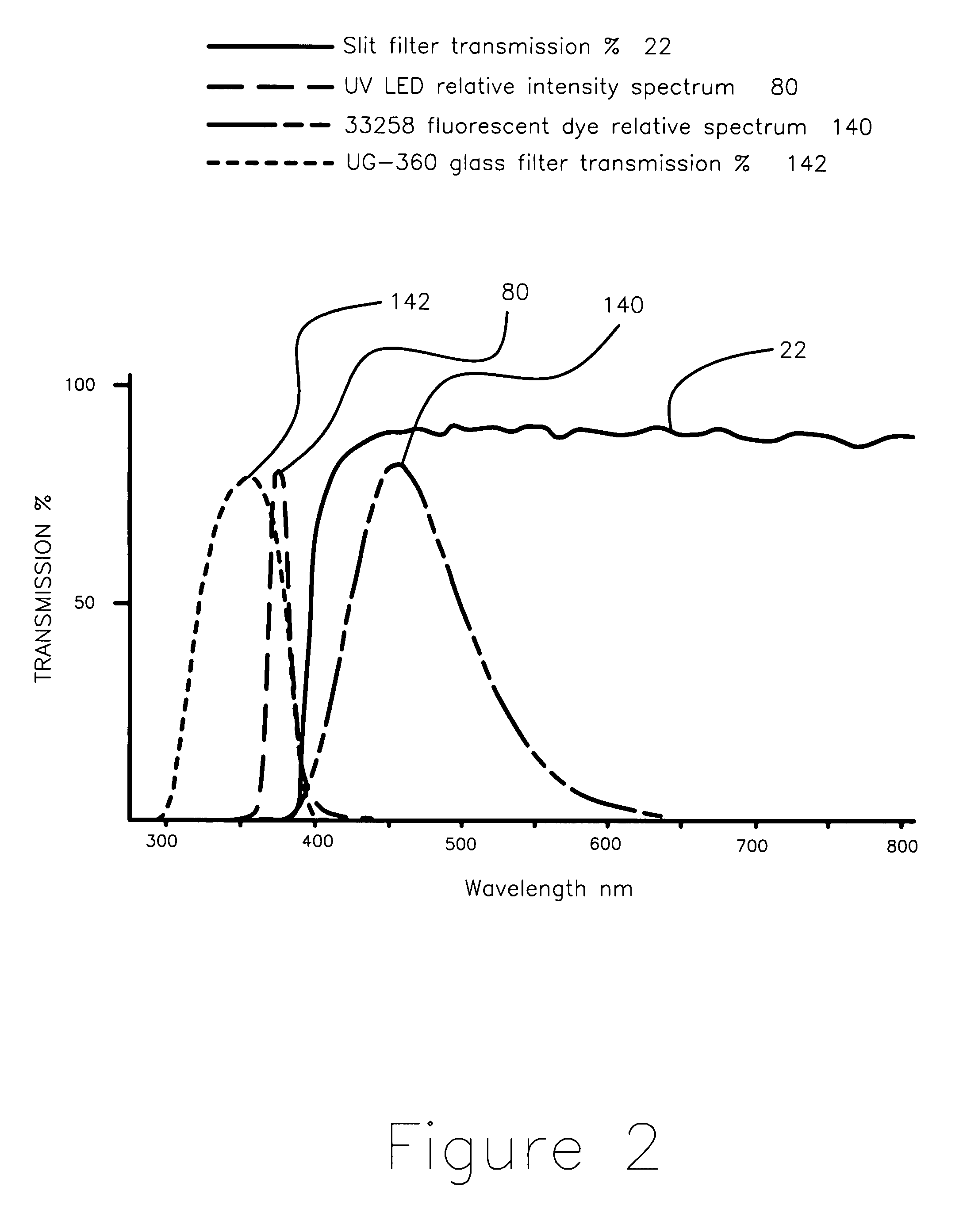Apparatus and method for measuring the signal from a fluorescing nanodrop contained by surface tension
a surface tension and nanodrop technology, applied in the field of spectrofluorometry, can solve the problems of insufficient application of the type disclosed in the referenced robertson patents to the measurement of a fluorescing nanodrop, interference with the much less intense light produced by the sample fluorescence itself, and inability to meet the requirements of fluorescence measurement, etc., to achieve the effect of minimizing the transmission of unwanted light and increasing the unwanted ambient and background excitation light energy
- Summary
- Abstract
- Description
- Claims
- Application Information
AI Technical Summary
Benefits of technology
Problems solved by technology
Method used
Image
Examples
example 1
Emission Spectra of a Donor—Acceptor FRET (Fluorescence Resonance Energy Transfer) Pair and its Positive Control
[0066]The FRET pair was constrained in a hairpin configuration comprised of a single-stranded nucleotide probe (loop) and a double-stranded nucleotide (stem) structure. The fluorescence donor (fluorescein) was covalently attached at one end and an acceptor (Cy5) covalently attached to the other end of the stem. Thus, In the absence of the complimentary nucleotide sequence to the probe (loop), the hairpin's double-stranded (base-paired) stem structure is conserved. The excited donor's fluorescence 510 was proportionally transferred to the acceptor resulting in longer wavelength fluorescence emission 540 at wavelength 530. In the presence of the complimentary sequence to the single-stranded probe (loop), the hairpin's base-paired stem structure was disrupted, double-stranded probe was formed, and the resonance energy from the excited donor 510 was not transferred 520 to the ...
example 2
Virtual-filtered Emission Spectrum of a Solution Containing Four Fluorophores Excited with an Unfiltered White LED
[0067]Complex mixtures of fluorophores having excitation maxima differing by 200 nm have been excited using a single broad wavelength unfiltered white LED source, shown as 140 in FIG. 4. The resulting virtual-filtered emission spectrum of four fluorophores, each differing by approximately 50 nm within the wavelength boundary 270, was displayed and labeled as 550.
PUM
 Login to View More
Login to View More Abstract
Description
Claims
Application Information
 Login to View More
Login to View More - R&D
- Intellectual Property
- Life Sciences
- Materials
- Tech Scout
- Unparalleled Data Quality
- Higher Quality Content
- 60% Fewer Hallucinations
Browse by: Latest US Patents, China's latest patents, Technical Efficacy Thesaurus, Application Domain, Technology Topic, Popular Technical Reports.
© 2025 PatSnap. All rights reserved.Legal|Privacy policy|Modern Slavery Act Transparency Statement|Sitemap|About US| Contact US: help@patsnap.com



